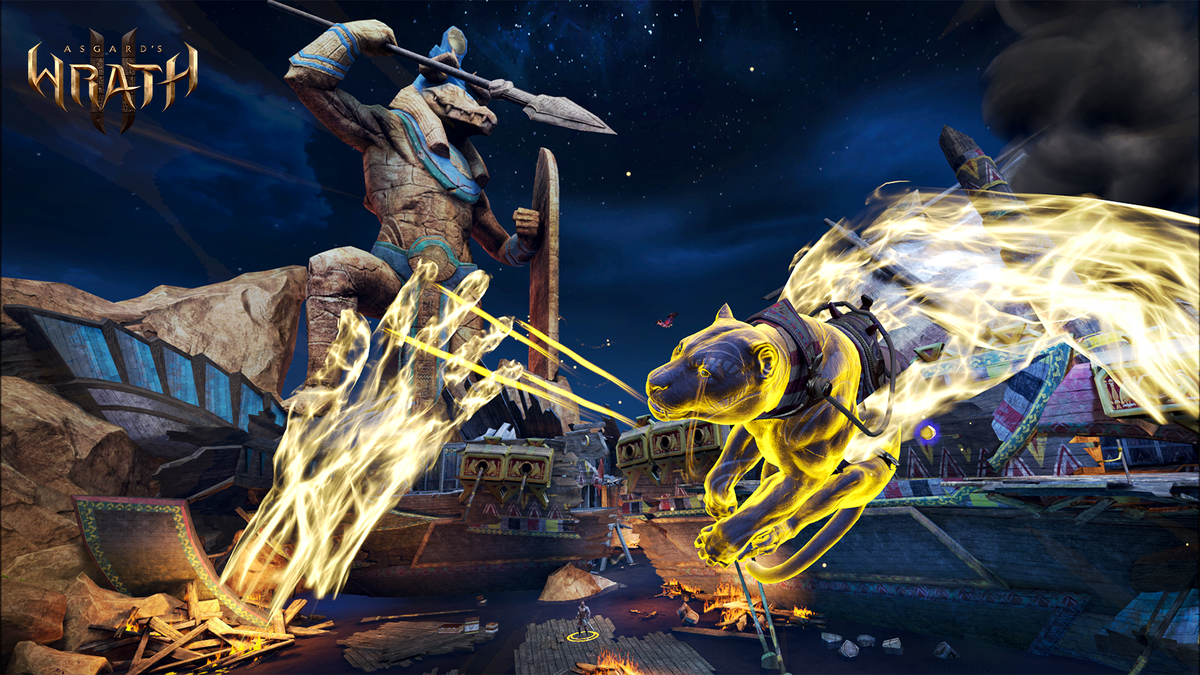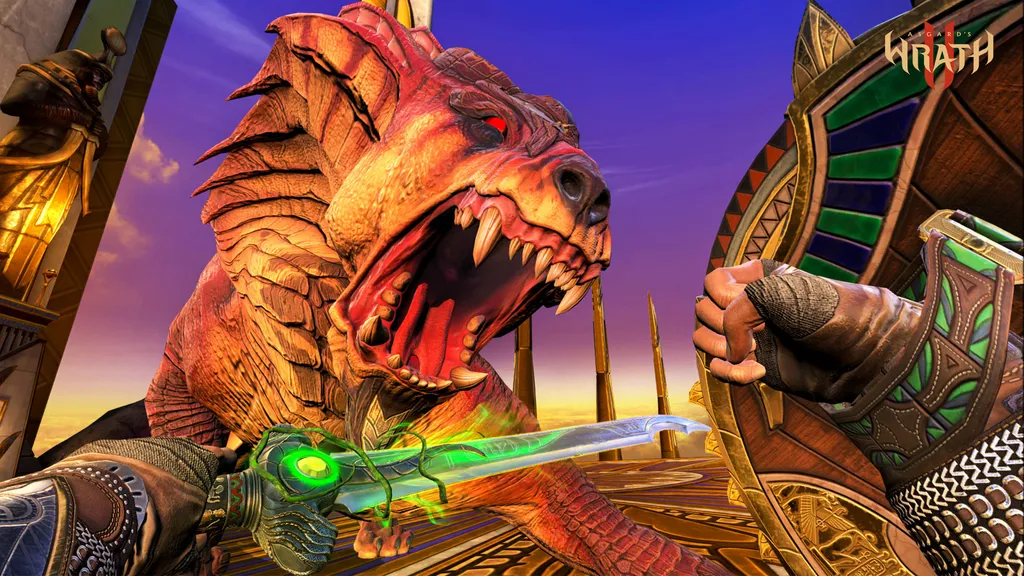Asgard's Wrath 2 arrives next week and we've been playing through the opening hours in preparation for our full review.
We're holding back our full judgments until then, simply because the game is so vast that it will be impossible to tell how we feel about it until we've been able to play (and digest) the rest of this 60+ hour epic from Meta and Sanzaru Games.

However, in the meantime, we wanted to give you a glimpse of some of what we've seen so far: some things to look forward to, some that surprised us and others that we're remaining cautious about.
Epic Proportions
From the get-go, Asgard's Wrath 2 is undeniably epic in more ways than one. Narratively, it's a tale of gods – you begin on a journey to find the Norse trickster himself, Loki, and find yourself planted in ancient Egypt where you'll interact with familiar Egyptian gods and switch between god-scale puzzling and inhabiting mortals for action and exploration.
It's a premise that, in itself, sets the scene for a story of almost overwhelming proportions. Even as someone with familiarity of many of the gods mentioned, it's sometimes hard to keep track of who is who and not feel like the stakes are being gobbled up by the godly equivalent of technobabble. However, what the premise does do is create some truly stunningly cinematic moments. Even in the opening hours, there are sections of Asgard's Wrath 2 that are unlike what we've seen on standalone VR previously.
Many of these are found in cutscenes, which showcase a truly profound understanding of cinematic direction when applied to an immersive format in virtual reality. Yes, some of what play out in front of you is visually bigger and better than what you might have seen before, but it's the art and cinematic direction that makes it impactful. Cutscenes are often rendered boring in VR from a lack of interaction – here, the spectacle cuts through the boredom, keeping you on your toes at all times.
A flashback sequence, showing the origin story of the Egyptian god Horus, sees you ride on the back of an eagle as giant depictions of gods fight, flee and flash before your eyes in a series of well-executed animated sequences. The direction and seamlessness is what makes it impressive, alongside the huge scale of action.
Careful design and art decisions are clearly what make such sequences possible on standalone hardware. The eagle's feathers, for example, are represented by a flat, fairly low and unrealistic-looking resolution texture, for example – something you might not even notice, given the other action unfolding in front of you. Likewise, the huge gods towering over you aren't fully detailed, fleshed out models, appearing instead as ghostly blue forms with glowing wireframes and an ethereal appearance. Again, it's a decision the average player might not even notice, as it fits into the thematic beats of the sequence seamlessly. However, it's an interesting example of a studio finding the optimal meeting point between art direction, optimization and storytelling to get the most out of standalone VR hardware.
Getting Comfortable
In terms of gameplay, it's still early days and I remain largely on the fence with wider thoughts on combat, exploration, length and the overall campaign. However, there is one glaring omission obvious from the start: adequate comfort options.
Motion sickness in virtual reality remains a common problem faced by many players, including myself. For many, it is artificial movement (movement that happens in-headset but not in the real world, such as moving a character forward in-game with a thumbstick while standing still in real life) that triggers nausea.
One of the most common methods of combating this is by providing players with the ability to enable 'vignetting'. Typically, this fades a circular, feathered black border around the player's field of view during artificial movement. This limits peripheral vision and can be effective at reducing nausea, particularly in games that rely heavily on thumbstick-orientated movement, akin to traditional flatscreen games.
Asgard's Wrath 2 does feature a set of comfort options, but their implementation is slightly confounding.
At the beginning of the game, players are prompted to choose between visceral, comfortable or the default presets, the latter for which provides a balance between the former. Players can then later individually turn on/off options within the settings, such as snap turn (or adjusting angle/turn speed), camera shake and 'tunneling', which is the game's version of a vignette.
However, the vignette doesn't operate under a blanket on/off system during movement. The vignette, or 'tunneling' effect, is enabled according to the proximity of your gaze/head towards the environment, terrain or other in-game objects.
This means that you can be walking forward in an open space and the vignette will not turn on at all, as there's nothing in close proximity in front of you. However, if you turn your head to the right towards a wall, the vignette will kick in during that movement, as your head is now in close proximity to other terrain around you.
This implementation of vignetting is completely antithetical to the general integration considered standard across other comparable VR experiences. Not only does it make the game less comfortable overall, it's also not overly effective in reducing nausea.
I'm told that changes to tunneling functionality are planned for post-launch, but was advised that in the meantime, the vignette effect could be more reliably enabled during movement by tilting my head slightly towards the ground. This does indeed work to enable the vignette effect more reliably. The game perceives my head/gaze to be closer to the ground, so the tunneling kicks in – but it also isn't the most enjoyable way to experience such a grand epic.
The game also includes a switch between visceral, comfortable or balanced movement for traversal such as sliding and wall running, with the former being more intense and comfortable providing more stabilization with the motion.
Every player has a completely different propensity towards motion sickness in VR, but it's lofty to expect players will be able to make it through a game of this scale without including fairly standard comfort options – I know it will certainly affect the rest of my playthrough.
A Battle of the Gods
Despite my concerns regarding comfort, the opening sequences of Asgard's Wrath 2 are undoubtably impressive – the real question is whether that sheen will wear off after many more hours of play.
The comparison that immediately comes to mind is Skyrim – both in and out of VR. It's an easy one, thanks to the similar fantasy settings centered around gods and deities. However, there is something in the general atmosphere, world building, dialogue structure and even audio cues that feels reminiscent of the Bethesda classic.
The jury is still out on whether it can even remotely stand up to something of Skyrim's stature – Asgard's Wrath 2 could meet it eye-or-eye or may just end up sitting somewhere in its shadow. Stay tuned for our full review.



























